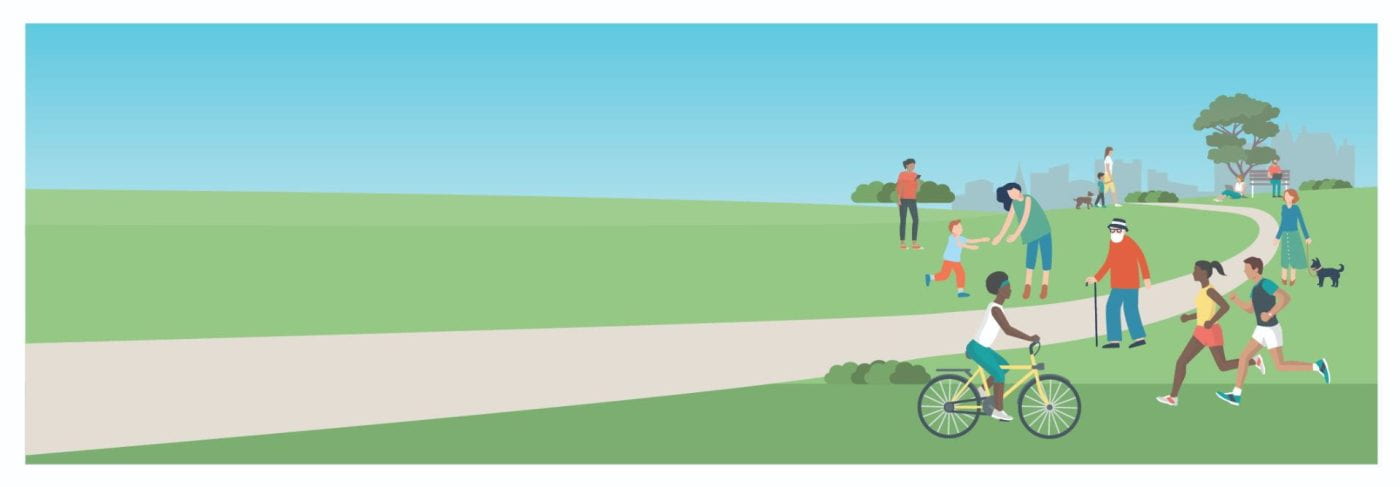Introduction: An all-day gathering to discuss a topic of interest is a luxury not many can afford, and yet this was exactly what the KM catalyst award allowed us to do.
We were discussing Frailty Virtual Wards. This is a way of caring for unwell people with severe frailty in their own homes, instead of them having to go into hospital. Technology (and a human visiting on and off) allows a team of health and care workers to keep a collective eye on how the person is doing when they are ill. Ideally, this then prevents frailty-related events such as a sudden lack of mobility (called ‘off-legs’), a severe fall, or delirium.
Frailty virtual wards can keep unwell people with frailty from being stuck in a bed in a hospital, risking catching hospital infections and losing physical and mental fitness (called ‘deconditioning’). It also keeps beds in hospitals available for more severely ill people.
The NHS has required local providers to roll out frailty virtual wards across England since December 2021, and it is important to optimise how they work. Our research led to a set of recommendations around how to do this, and we wanted to share this learning with all the relevant people, in the hope that we can inform practice and policy.

Workshop Topic: Our workshop discussed the policy recommendations from our project that explored how Frailty Virtual Wards work in the UK and how the currently rolled-out approach may be improved. We also discussed how virtual wards fit into how the NHS treats people with frailty, from diagnosis onwards.
A key issue for us was that, as the UK population is living longer, there will be more people with frailty in the coming years. Therefore, whatever form virtual wards take, they will need to be sustainable in the face of higher future need. We wanted stakeholders to discuss how this could be achieved, both thinking about the detail and considering the bigger picture.
Participants: We brought together different stakeholders: patients and caregivers, clinicians (e.g. GP, geriatrician), commissioners and researchers in one room to learn from each other. There were 17 people in the workshop and the energy, and empathy, of all participants remained high till the end of the 6-hour day.
Key Insights: We learnt that having the time to listen to every view brings us all closer to our shared goal, which in this case is better Frailty Virtual Wards.
One surprising insight was that all stakeholders recognised the pivotal role of the caregiver and lowering their burden, as key to Frailty Virtual Ward optimisation.
We further agreed about the potential and value of the virtual wards, although we didn’t always agree on the best way to improve these; half of us considered the four building blocks for implementing virtual wards to be the most important element, while the other half considered the proactive (preventative) care element as the most important.
We also realised that our project not only informed the NHS’s rolled-out virtual wards, but also aligned with the NHS’s integrated neighbourhood teams (preventative care). Development of our whole-system recommendations may enable bringing these services closer together.
Workshop Outcome and Future Plans: This workshop connected Frailty Virtual Wards’ decision makers with service users and researchers in a way that hadn’t happened before. It was a great space for cross pollination of ideas. Patients and caregivers could become part of the conversation for change, and clinicians and commissioners could take the learning back to inform their decision making.
Having built relationships by coming together in person, the workshop participants will keep in touch and continue to share learning about developments in the frailty virtual ward sector. Members of the group are also involved in ongoing discussions about working together to apply for funding for new research on Frailty Virtual Wards.
Final Reflection: Reflecting on the workshop, the participants noted that it “enabled headspace”, and they liked “the connections”, “learnt a lot from different professionals and public members” and had “a new appreciation of wider landscape and where virtual wards sit in it”. Participants also intended to “take the learnings back” and have “more conversations about frailty and what it really means”.
Link to our project: What makes a virtual ward for patients with frailty work well? A rapid realist review – ARC West
By Sharea Ijaz and Maggie Westby

